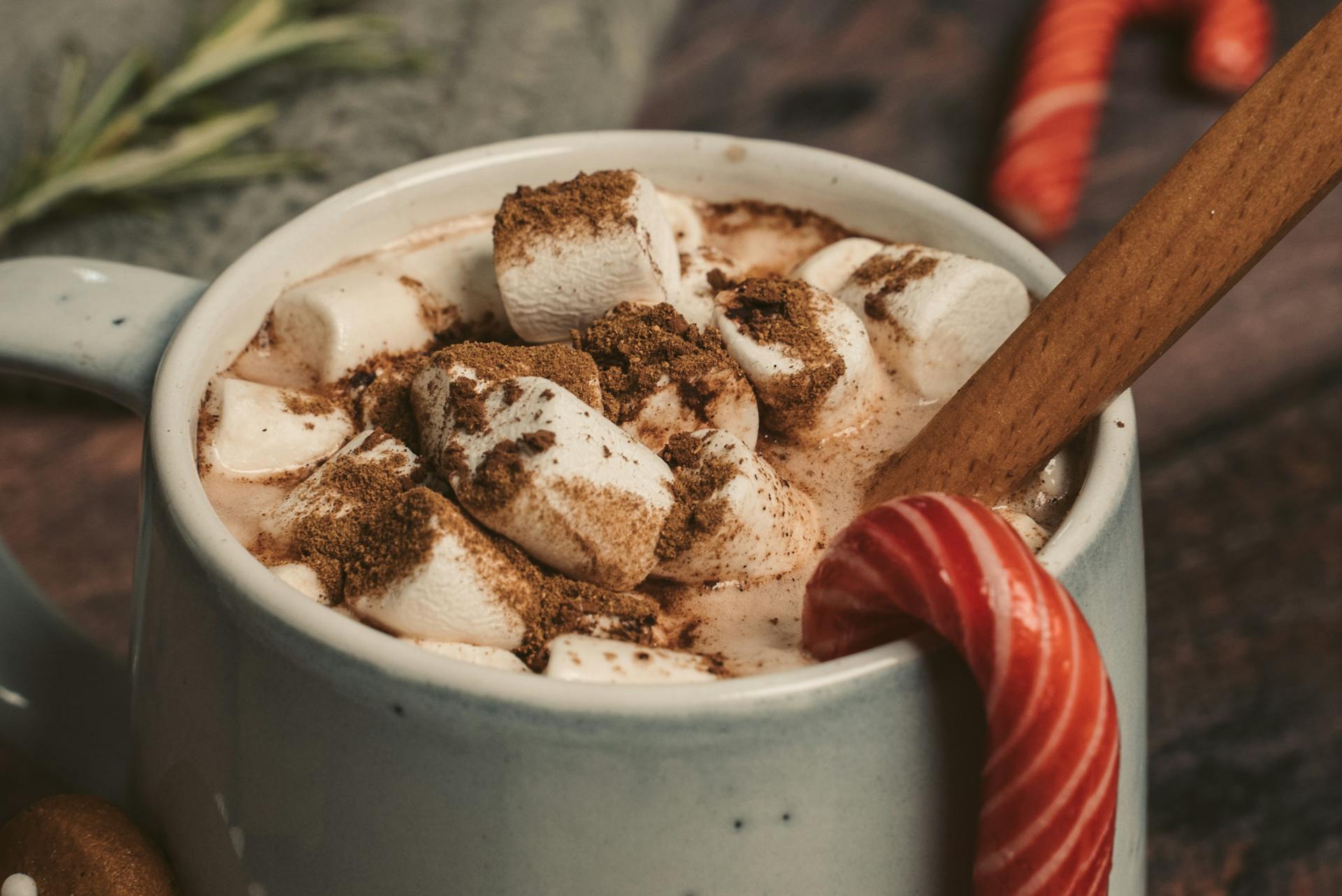U.S. News
27 Holiday Treats That May Be Banned Under RFK Jr.’s Health Initiatives
By Jake Beardslee · December 16, 2024

Here are 27 holiday favorites that might be impacted under these health-focused changes: Gage Skidmore / Wikimedia

Candy Canes
Candy canes get their iconic red and white stripes from artificial dyes like Red No. 40. Stricter regulations on synthetic coloring might require reformulations or lead to these holiday staples being removed from store shelves entirely. Brigitte Tohm / Pexels
Gingerbread Cookies
Gingerbread cookies often include high-fructose corn syrup (HFCS) in their icing and decorations. HFCS has been associated with obesity and metabolic syndrome. Under Kennedy’s initiatives, natural sweeteners like honey or maple syrup might replace HFCS, changing the texture and flavor of this holiday classic. Jill Wellington / Pexels
Eggnog: Creamy but Controversial
Eggnog often contains artificial flavorings, stabilizers like carrageenan, and synthetic sweeteners. Carrageenan, a thickener derived from seaweed, has been linked to digestive issues. Kennedy’s focus on cleaner ingredients could lead to reformulated recipes or a reduction in availability of store-bought eggnog. Jill Wellington / Pexels
Yule Log Cakes
Yule log cakes are a centerpiece dessert for many holiday celebrations, but they rely on artificial flavors, colors, and preservatives to achieve their rich appearance and long shelf life. Stricter food standards could force bakers to turn to natural alternatives, which may affect the cost and taste of this iconic treat. KATRIN BOLOVTSOVA / Pexels
Peppermint Bark: A Seasonal Snack at Risk
This chocolatey treat often includes synthetic peppermint flavoring and artificial white chocolate. Stricter guidelines could demand purer, more natural ingredients, making it pricier—or less widely available—for holiday shoppers. Jill Wellington / Pexels
Fruitcake: A Preservative-Laden Tradition
Fruitcake is notorious for its long shelf life, thanks to ingredients like sodium benzoate and potassium sorbate. These preservatives extend freshness but could come under scrutiny for potential health risks. Pixabay / Pexels
Holiday M&M's
Holiday-themed M&M’s get their festive red and green hues from synthetic dyes like Red No. 40 and Yellow No. 5. RFK Jr.’s push for natural alternatives could change the appearance—and availability—of this seasonal favorite. Evan-Amos / Wikimedia
Chocolate Advent Calendars
The chocolates in advent calendars often contain emulsifiers like soy lecithin and preservatives to maintain texture and freshness. These additives could face stricter scrutiny under Kennedy’s proposed policies. Torsten Dettlaff / Pexels
Store-Bought Sugar Cookies
Prepackaged sugar cookies rely on artificial flavors, colors, and stabilizers to maintain their festive designs and softness. Kennedy’s health initiatives might encourage the elimination of these additives, pushing manufacturers to adopt cleaner recipes. Laura James / Pexels
Marzipan Treats
Marzipan candies are often dyed with artificial colors to create vibrant, festive designs. These dyes, such as Blue No. 1 and Red No. 3, could be targeted for removal, leading to a more muted—and possibly less appealing—version of these holiday confections. James Petts / Wikimedia
Packaged Gingerbread Houses: Decoration or Dessert?
Prepackaged gingerbread house kits often include synthetic food dyes and preservatives in both the cookie base and the candies used for decoration. These kits might need significant ingredient overhauls to comply with stricter regulations. Jamie Lee / Pexels
Cranberry Sauce: Canned and Questionable
Many canned cranberry sauces use high-fructose corn syrup and artificial flavorings to enhance sweetness and texture. RFK Jr.’s health initiatives could push for recipes with natural sweeteners, altering the taste and affordability of this Thanksgiving and Christmas dinner staple. Famartin / Wikimedia
Hot Cocoa Mixes
Instant hot cocoa mixes often include artificial flavors and emulsifiers like carrageenan to achieve their creamy texture. Stricter health standards could push manufacturers to simplify ingredient lists. Taryn Elliott / Pexels
Holiday-Themed Ice Cream: Festive but Processed
Seasonal ice cream flavors like peppermint and eggnog often rely on synthetic flavors and stabilizers. Kennedy’s focus on reducing artificial additives might lead to cleaner but more expensive versions of these limited-time treats. JÉSHOOTS / Pexels
Sprinkles: Small but Significant
Sprinkles are a key decoration for holiday cookies and cakes, but they are typically made with artificial dyes and waxy coatings. Under stricter health policies, these colorful toppings might need to be reformulated, or they could disappear from store shelves entirely. Alexander Grey / Pexels
Candy Apples: A Sticky Situation
Candy apples often achieve their shiny red coating from synthetic dyes and high-fructose corn syrup. Kennedy’s initiatives could require cleaner alternatives, potentially making this carnival and holiday treat less affordable or widely available. Larissa Farber / Pexels
Holiday-Themed Marshmallows: Puffy but Problematic
Festive marshmallows shaped like trees or snowmen often contain artificial colors and stabilizers. Stricter regulations might push manufacturers to use natural ingredients. Votsis Panagiotis / Pexels
Packaged Chocolate-Covered Pretzels
Chocolate-covered pretzels often use artificial flavors and preservatives to maintain their festive coatings. Reformulations might impact the accessibility and shelf life of this holiday favorite, making it a less convenient treat for gift-giving. Viktoriia Kondratiuk / Pexels
Holiday Pies
Store-bought pies like pumpkin, pecan, and apple often contain preservatives like TBHQ (tertiary butylhydroquinone) to extend shelf life. TBHQ has been linked to potential health concerns, including effects on immune function. Stricter health policies might require manufacturers to adopt preservative-free recipes, which could lead to shorter shelf lives and higher prices. ROMAN ODINTSOV / Pexels
Panettone
Panettone, the Italian sweet bread, relies on emulsifiers and preservatives like mono- and diglycerides to maintain its fluffy texture and long shelf life. These additives might be flagged for removal under stricter health regulations, making this holiday classic harder to find or more expensive. Polina Kovaleva / Pexels
Ribbon Candy
Ribbon candy, a nostalgic holiday treat, often gets its vibrant colors from synthetic dyes like Red No. 40 and Blue No. 1. If Kennedy’s initiatives push for natural coloring agents, this treat could lose its iconic look—or disappear entirely from store shelves. Leah Newhouse / Pexels
Packaged Shortbread Cookies
Packaged shortbread cookies often include artificial butter flavor and stabilizers to enhance taste and extend freshness. These synthetic ingredients might come under scrutiny, leading to cleaner recipes that could alter the cookies’ rich flavor and crumbly texture. Suzy Hazelwood / Pexels
Holiday Fudge: Festive but Processed
Many pre-packaged holiday fudges use artificial sweeteners and thickeners like corn syrup solids to achieve their smooth, creamy consistency. Under stricter regulations, these products might require reformulation, affecting taste and texture—or they could disappear entirely. Siona Watson / Pexels
Chocolate Coins
Chocolate coins wrapped in foil are a holiday tradition, but the chocolate often contains artificial flavors and emulsifiers to maintain its shape and shelf life. These ingredients might face restrictions under Kennedy’s health initiatives. liz west / Wikimedia
Spiced Holiday Nuts
Store-bought holiday nut mixes often include artificial flavorings and coatings to achieve their festive appeal. RFK Jr.’s focus on natural ingredients could drive manufacturers to reimagine these products. Marta Branco / Pexels
Chocolate-Covered Cherries
These boxed treats rely on artificial cherry flavoring and stabilizers in their syrup filling. Stricter ingredient standards might require reformulations or make this indulgent holiday staple a rarity on store shelves. Evan-Amos / Pexels
Peppermint Milkshakes
Seasonal peppermint milkshakes from fast-food chains often include artificial peppermint flavor and Red No. 40 for their festive pink hue. Stricter regulations could impact their formulation, potentially changing their taste and appearance. RDNE Stock project / Pexels
Cleaner, more natural versions of these treats could emerge, but they may come with a higher price tag or diminished availability, challenging our traditions and reshaping our holiday tables. Gage Skidmore / Wikimedia